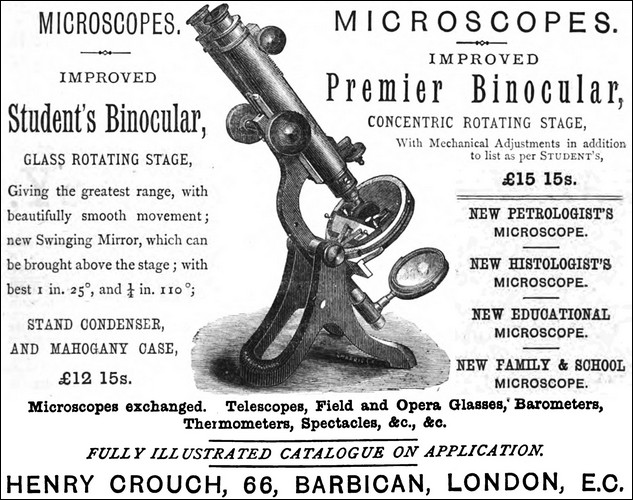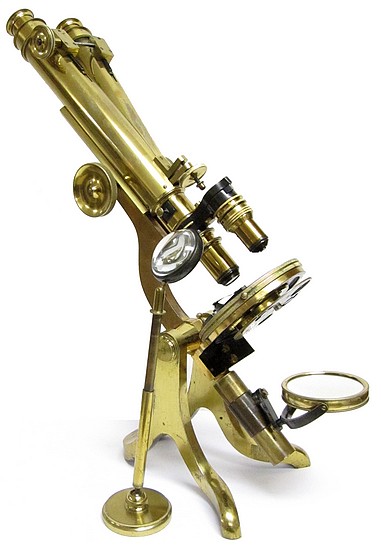
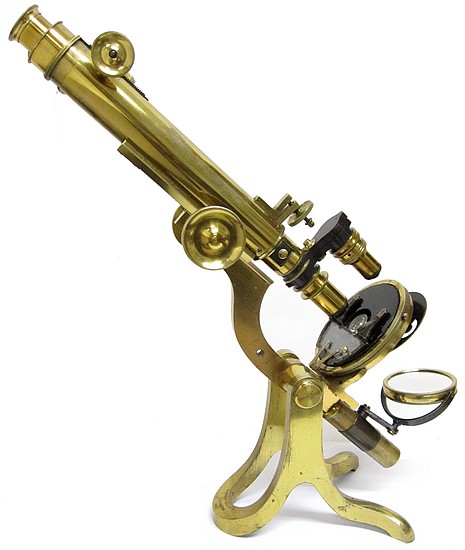
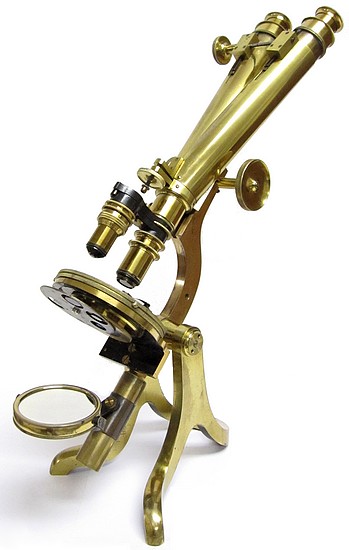
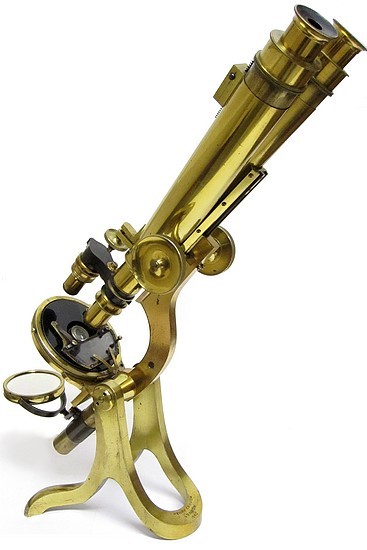
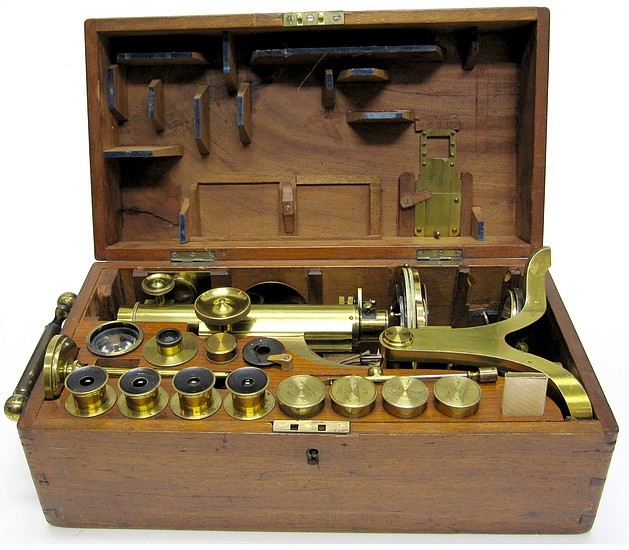
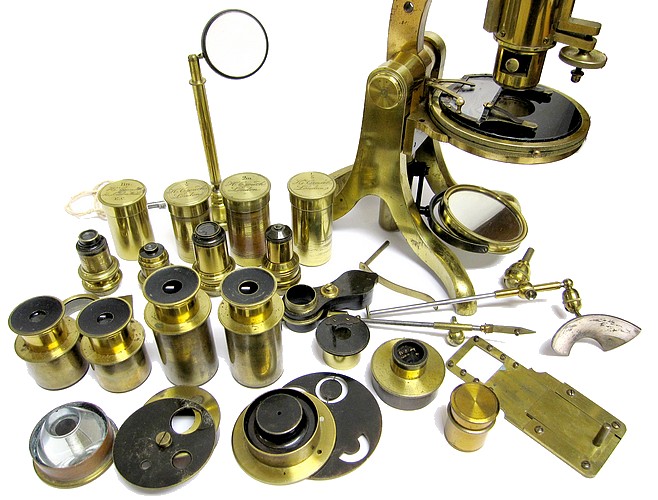
Accessories include four Crouch objectives with canisters (1/2, 1, 2, and 1/5-inch), two pairs of matched eyepieces, a sub-stage aperture wheel, a sub-stage condenser with aperture wheel and cap, a parabolic condenser for dark field use, an analyzing prism, a polarizing prism in a rotating mount, a camera lucida (missing its glass), a double objective changer, a live box (not shown in the above photo), a frog (or fish) plate, a stage forceps, a limb-mounted side reflector, one (of two) stage clips which are used instead of the sliding slide carrier, and a free standing bulls-eye condenser. The case has a lock and its key.
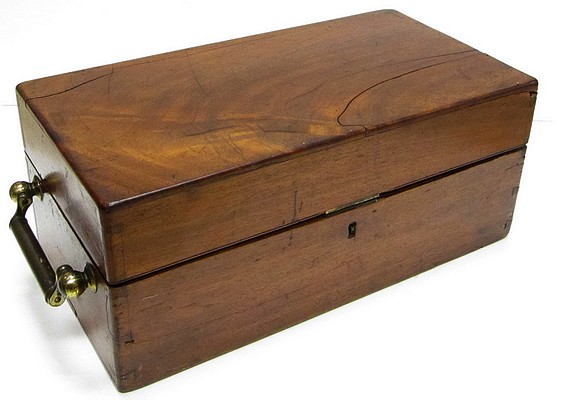
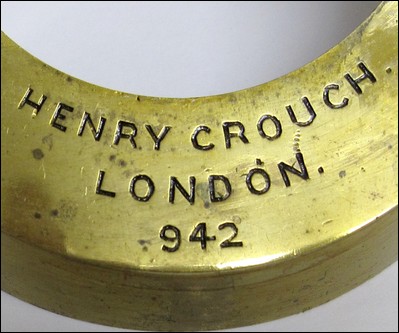
The following is extracted from the James W. Queen catalog, 1880:
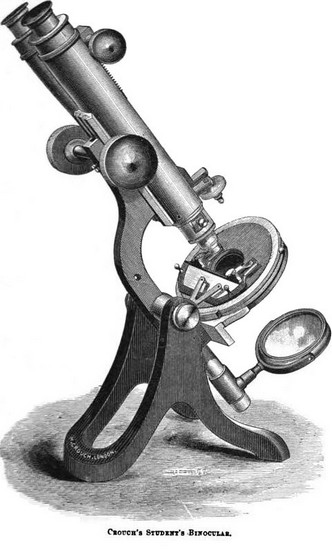
Crouch's Student's Binocular: The Stand (as figured in No. 3105) is 16 inches high, and is of brass throughout, handsomely finished. The new form of Foot, with which this instrument is now made, combines elegance with great firmness and stability. The body is of the standard length, 1 3/16 inches in diameter, and has rack adjustment to draw tubes, for adaptation to the varying distance between the eyes in different individuals. Rack and pinion adjustment for focus, giving sufficient range even for a 4-inch objective; fine lever adjustment, which works well with the highest powers. Glass Concentric Rotating Stage (giving the greatest range and most delicate movement of any stage of its class extant), with complete rotation. Revolving Diaphragm of 3 apertures, removable Concave and Plane Mirrors, with complete adjustments; for oblique light the mirror bar swings as in the "Histological" Microscope, being hinged back of and just below the stage. This arrangement admits of the mirror being swung above the stage, thus giving a brilliant illumination for opaque objects, and rendering the bull's-eye condenser unnecessary for this purpose. This Microscope, in its "Binocular form-the first introduced to the scientific public at a reasonable cost-has steadily increased in reputation, and has now attained the highest position of any microscope of its class. Either as "Binocular" or "Monocular," it has been selected by the first microscopists in England and America for personal use. Its thorough excellence of performance, stability in any position, freedom from tremor (in this respect being unrivaled), simplicity of construction, and consequent non-liability to derangement, renders it by far the most perfect working microscope extant. It has now for many years been favored with the approval of Dr. Carpenter as his own working microscope, and was the instrument selected by him for use on the important expeditions of H. M. S. "Porcupine." It was also supplied to the naturalists of the "Alert" and "Discovery," of the Arctic expedition.
In using the Binocular as a Monocular Instrument, it is only necessary to withdraw the prism about 1/4-inch, thus leaving the field of the direct tube entirely clear where required.
Should the coarse adjustment be found in course of time to work too easily, it may usually be remedied by tightening the two small screws acting upon the bearings of the pinion.
The accessories applied under the stage are often found to accumulate dirt upon the fitting, making them slide uncomfortably. This is best remedied by carefully wiping off all accumulation with a clean rag slightly oiled, and also in the same manner cleaning out the fitting under the stage, taking care to wipe them finally with a perfectly dry cloth.
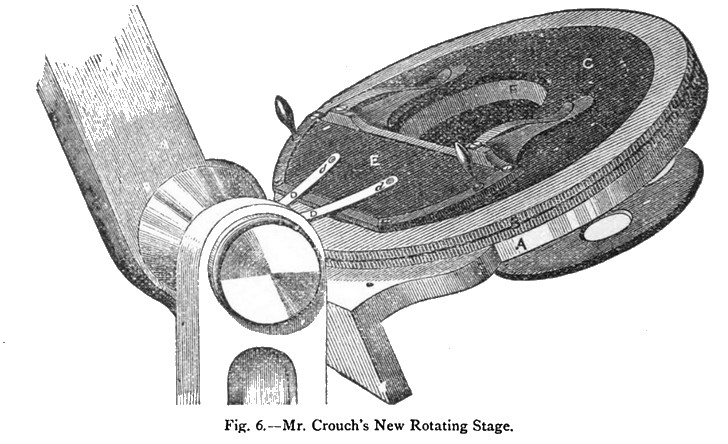
The Crouch Student's monocular and binocular microscopes were usually sold having an oxidized brass finish on base and limb. This particular example is exceptional given that it is finished entirely in bright lacquered brass. The early form of the Crouch Student's binocular microscope is also represented in this collection.
